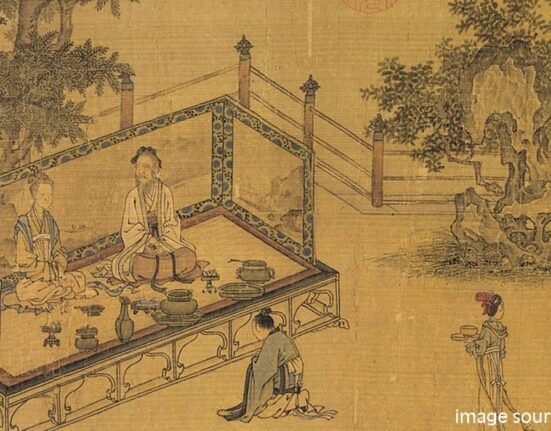Culture is a particular set of behaviour, patterns and attributes of a certain group of people. They have their owm specific language, music, art, cuisinead habits. It can also be defined as shared patterns of behaviours and interactions, cognitive constructs and understanding that are learned by socialization.
How Indian culture plays a role in psychology?
Culture plays an obstinate role in colouring the psychopathology of various psychiatric disorders. However, some psychiatric Disorders are limited to certain specific cultures. These disorders are called culture-specific or culture-bound syndrome.
Culture-specific syndrome or Culture-bound syndrome is an amalgamation of psychiatric and somatic symptoms that are considered to be a recognizable disease only within a specific society or culture. There is no objective physical cause seen in these disorders.
As we all know, India is a country full of cultures, religions, languages. There are various values and beliefs in different cultures which makes one belief what is beyond reality.
In many cultures, such as, Hinduism,Islam,Buddhism,Jainism,Sikhism, there are different belief systems. As, in Hinduism people believe in so many gods, hence the customs are likewise; doing pooja every day, taking shower every day, not eating food without taking bath, not cutting nails on various days etc. Among Muslims also, there are various beliefs such as wearing hijab for girls etc.The belief system has made every individual and the whole society bound to think so much, that at times it poses strong influence, in terms of psychology.
1.Dhat Syndrome
The Dhat Syndrome is prdominently found in South Asian Countries including India, Pakistan, Nepal, Sri Lanka and Bangladesh. In this syndrome, males face problem of premature ejaculation and sometimes complain of passing semen while urinating. The medical practioners view this words to refer to anxiety and hypochondrical concerns. According to them, this exhausts the suffering person and weakens their body. The patient usually presents with various somatic, psychological and sexual symptoms. Patient attributes it to the passing of whitish leak, believed to be semen (Dhat), in urine.
Dhat is derived from the Sanskrit word ‘Dhatu’, meaning precious fluid. According to ancient Indian literature, there are 7 Dhatus described in the body. Dhatus are concoction of the body. It was believed that any disturbances regarding these, can cause physical and mental weakness. Whereas, Shukra is the word used for sperms in Sanskrit. This gives rise to the belief, that loss of excessive semen in any form e.g. masturbation, wet dreams and ejaculation is harmful. On the other hand, its preservation will lead to health and longevity. Thus, as a belief, precious and life-preserving properties of semen is deeply ingrained in Indian culture. This belief is further carried out into families explaining their children about it.It has also lead to prohibition of masturbation or considering it a sin in some cultures.
Possession Syndrome or “Maata Ana”
It is diagnosable under dissociative disorders. The patient is possessed usually by ‘spirit/soul/Matta’ of a deceased relative or some spirit. The possessed person speaks with a change in their voice, tone and audacity. Also, if the possessing soul belongs from the opposite gender, the suffeimg person behaves in that same way. It is usually seen in rural areas or in migrants from rural areas. You must have also seen the presentation of this syndrome in many movies like bhool Bhulaiya, exorcism etc.
Majority of these patients are females who otherwise don’t have any other outlet to express their emotions. It’s treatment include, careful exploration of underlying stress which precipitats the attacked possision which is also useful to decrease the secondary pains the patient is experiencing due to this syndrome.
For instance, there are many cases from rural areas where they were chanting god and suddenly they felt that some deity has got into them and they started acting as if there is someone inside them.
Culture constrained suicide
Cultural constrained suicide is a kind of suicide which was seen in ancient India.Where people used to commit suicide in terms of keeping their familial custom within standards.
Some of the illustrations are:
Sati Pratha: In Rajasthan India (1904). self-oblation by a widow on her husband’s pyre. According to Hindu mythology, the wife of Daksha was so overwhelemed at the demise of her husband that she sacrificed herself on his funeral pyre and burnt herself to ashes.
Since then it has come to be symptomatic of self-oblation by a widow.It was banned in India since 19th century.
Jouhar: In the 15th century, Rani Padmavati of Chittoor among with hundreds of woman observed jouhar, even before the death of her husband to protect themselves from other religious men.
Santhara/Sallekhana: voluntarily giving up life by fasting unto death over a period oftime for religious reasons to attain God/ Moksha practised in Jain Community.
Koro
Seen in northeast states like Assam. Fear of genitalia retracting into the abdomen leading ultimately to death seen in both sexes. A person applies external retractors to the genitalia in the form of clamps, chains etc. to avoid it retracting back.It may occur as epidemics.
Jhin Jhinia: Characterised by bizarre and seemingly involuntary contractions and spasms with no physical cause.
Bhanmati Sorcery: In South India it is believed to occur due to psychiatric illness i.e. conversion disorders, somatization disorders, anxiety disorder,dysthymia, schizophrenia etc.
Suudu: A culture-specific syndrome of painful urination and pelvic “heat” familiar in south India, especially in the Tamil culture. It occurs in males and females. It is popularly attributed to an increase in the “inner heat” of the body often due to dehydration.
It is usually treated by the following:
1. Applying a few drops of sesame oil or castor oil in the navel and the pelvic region
2. Having an oil massage followed by a warm water bath
3. Intake of fenugreek seeds soaked overnight in water
Gilhari Syndrome: Feeling of small swelling on the body changing its position from time to time as if a gilhari (squirrel) is travelling in the body.
Others unnamed syndromes:
Priest syndrome:
Sndrome looks new as in various places people have kul gurus & personal priests where they suggests something and they believe and start doing that thing.
Eg. All superstitious behaviour like throwing salt on the floor ,cutting of nails on the restricted days,washing hair on Wednesdays,purchasing pooja related things on certain days ,eating non vegetarian on certain days ,not doing pooja on certain day and feeling of apprehension that something bad might happen to them,using nazar utharna things like lemon and chilli ,tying black thread behind the cars,putting black mark or tikka,hitting people with hunters.
Even in some places of our country crime has been reported through these acts .
Our Indian Society plays an important role in genesis of some psychiatric disorders. As there certain sayings we might have heard from our parents ,priests ,grandparents that what we do is dependend on what we believe.












Leave feedback about this